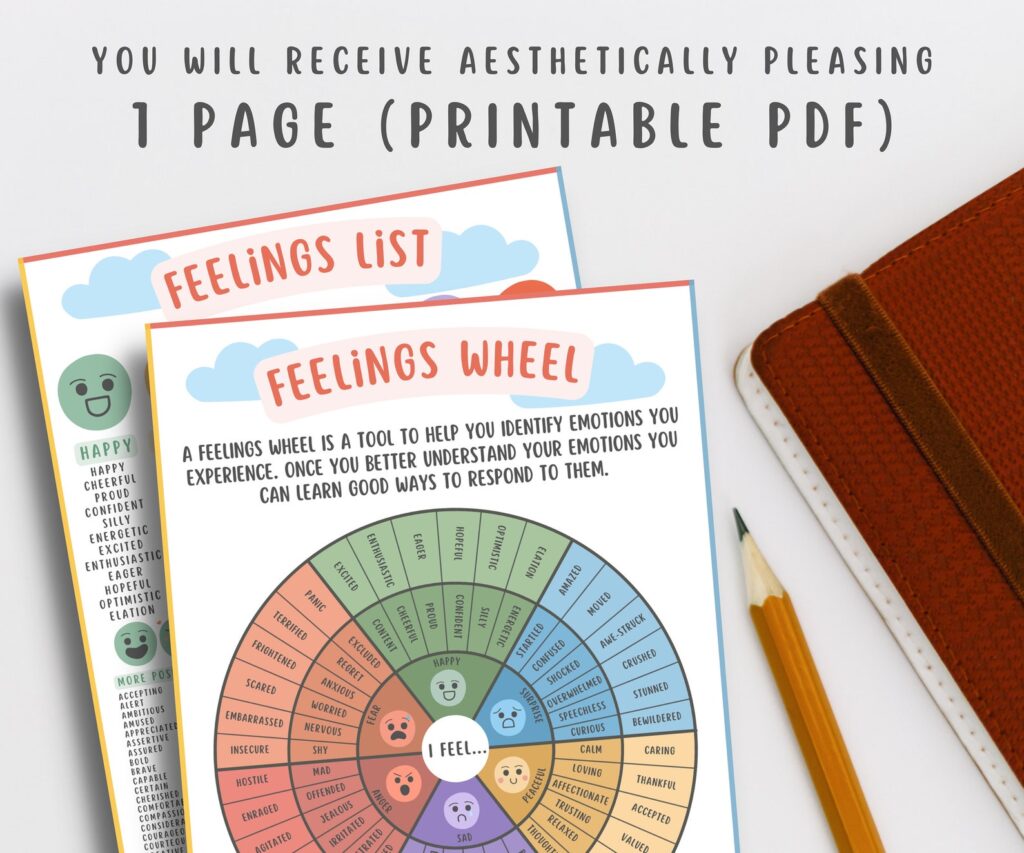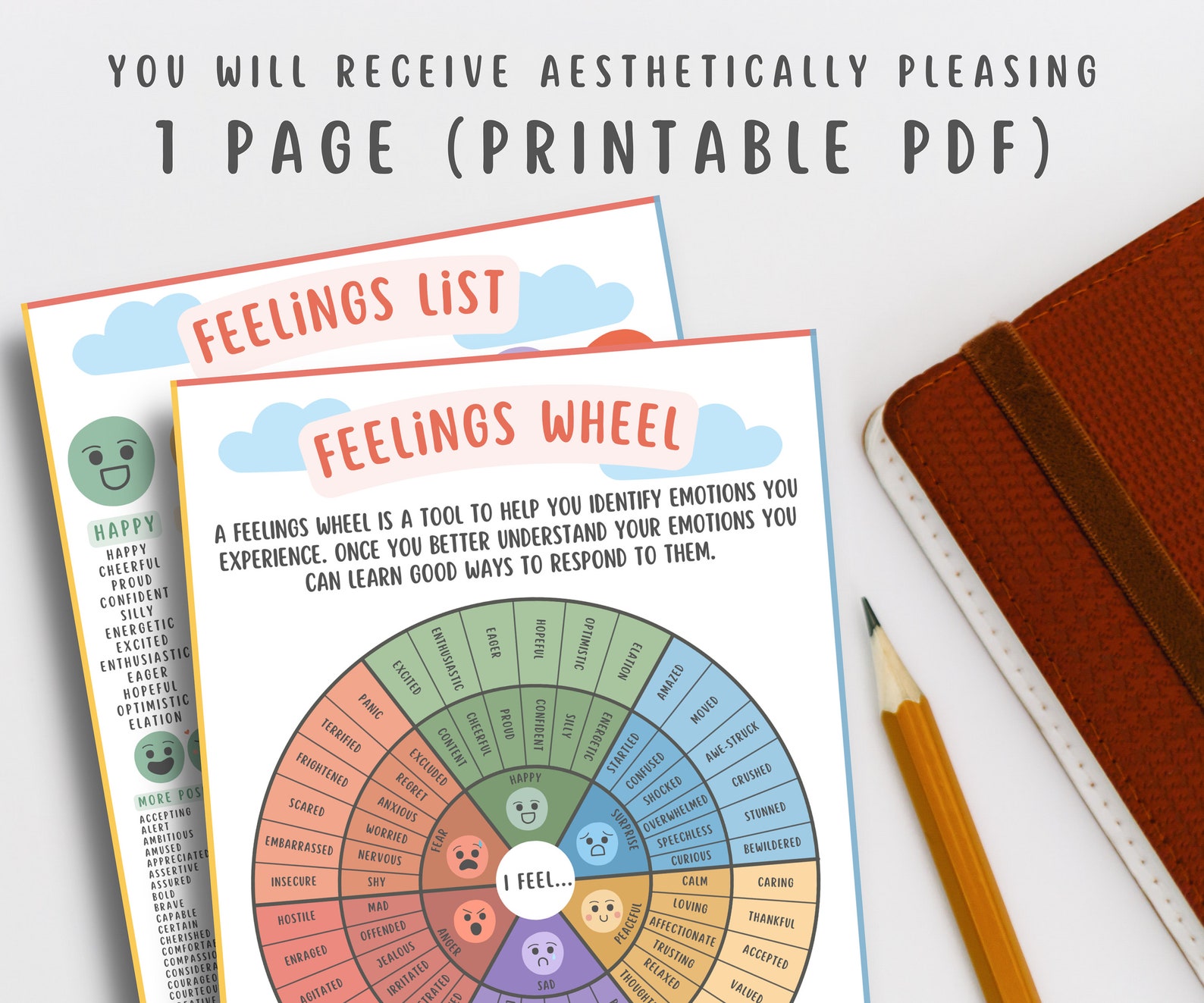
The Feelings Wheel for Teens: Understanding and Managing Emotions
Navigating the teenage years is a complex journey, marked by significant physical, emotional, and social changes. During this period, teenagers often experience a wide range of intense emotions, sometimes without fully understanding or knowing how to express them. One tool gaining popularity among therapists, counselors, and educators is the feelings wheel for teens. This visually engaging resource helps teenagers identify, understand, and communicate their emotions more effectively. This article delves into the concept of the feelings wheel for teens, exploring its benefits, how to use it, and why it’s a valuable asset in adolescent emotional development.
What is a Feelings Wheel?
A feelings wheel is a visual chart that organizes emotions into concentric circles. Typically, the innermost circle contains a few basic emotions, such as happiness, sadness, anger, fear, and surprise. Moving outward, each subsequent circle provides more nuanced and specific variations of these core emotions. For example, under ‘anger,’ you might find emotions like frustration, irritation, rage, and resentment. The feelings wheel serves as a prompt, helping individuals expand their emotional vocabulary and recognize subtle differences in how they feel.
Why is a Feelings Wheel Useful for Teens?
Teenagers often struggle with identifying and articulating their emotions. The feelings wheel for teens offers several key benefits:
- Improved Emotional Literacy: It helps teenagers learn the names and nuances of various emotions, increasing their emotional vocabulary.
- Enhanced Self-Awareness: By prompting teens to consider a range of feelings, it encourages introspection and self-reflection.
- Better Communication: Once teenagers can identify their emotions, they are better equipped to communicate their needs and feelings to others.
- Conflict Resolution: Understanding the root of their emotions can help teenagers manage conflicts more effectively and empathetically.
- Mental Health Support: Recognizing and expressing emotions can be a crucial step in addressing underlying mental health challenges, such as anxiety, depression, or stress.
How to Use a Feelings Wheel for Teens
Using a feelings wheel is a straightforward process, but it can be incredibly impactful. Here’s a step-by-step guide:
- Start with the Core Emotions: Begin by focusing on the emotions in the innermost circle. Ask yourself, “Am I feeling happy, sad, angry, fearful, or surprised?”
- Explore the Outer Layers: Once you’ve identified a core emotion, move outward to the next circle. For example, if you’re feeling angry, consider if you’re more frustrated, irritated, or resentful.
- Reflect on the Nuances: Take a moment to reflect on the specific emotion you’ve identified. What triggered it? How is it affecting your thoughts and behaviors?
- Communicate Your Feelings: Use the identified emotion to communicate your feelings to others. For instance, instead of saying, “I’m mad,” you might say, “I’m feeling frustrated because…”
- Journaling: Encourage teens to use the feelings wheel as a prompt for journaling. Writing about their emotions can help them process and understand their experiences.
Different Types of Feelings Wheels for Teens
While the basic structure of a feelings wheel remains consistent, there are variations tailored to specific needs and preferences:
- Basic Feelings Wheel: This is the standard version, with core emotions and related sub-emotions.
- Feelings Wheel with Faces: Some versions include facial expressions corresponding to each emotion, making it easier for younger teens or those who struggle with emotional recognition.
- Customizable Feelings Wheel: These wheels allow users to add or modify emotions based on their individual experiences.
- Digital Feelings Wheel Apps: Several apps offer interactive feelings wheels with additional features like mood tracking and coping strategies.
Integrating the Feelings Wheel into Daily Life
The feelings wheel for teens isn’t just a tool for therapy sessions; it can be integrated into daily life in various ways:
- Classroom Activities: Teachers can use the feelings wheel to facilitate discussions about emotions and promote emotional intelligence.
- Family Discussions: Parents can use it to help their teenagers express their feelings during family meetings or one-on-one conversations.
- Self-Care Routine: Teenagers can incorporate the feelings wheel into their self-care routine, using it to check in with themselves and identify their emotional needs.
- Conflict Resolution Skills: Teaching teens to use the feelings wheel during disagreements can help them understand their own emotions and the emotions of others, leading to more constructive resolutions.
The Science Behind the Feelings Wheel
The effectiveness of the feelings wheel is rooted in psychological principles related to emotional awareness and regulation. Research has shown that individuals who can accurately identify and label their emotions are better equipped to manage stress, build healthy relationships, and cope with challenging situations. The feelings wheel provides a structured framework for developing these skills, making it a valuable tool for promoting emotional well-being.
Addressing Common Challenges
While the feelings wheel is a helpful tool, some teenagers may face challenges when using it:
- Difficulty Identifying Emotions: Some teens may struggle to connect with their emotions or differentiate between similar feelings. Patience and gentle guidance can help them overcome this hurdle.
- Resistance to Vulnerability: Teenagers may be hesitant to express their emotions due to fear of judgment or vulnerability. Creating a safe and supportive environment is crucial.
- Overwhelmed by the Range of Emotions: The sheer number of emotions on the wheel can be overwhelming for some teens. Starting with the core emotions and gradually exploring the outer layers can make the process more manageable.
Beyond the Wheel: Additional Resources
While the feelings wheel for teens is a valuable tool, it’s essential to supplement it with other resources and strategies for emotional well-being. These may include:
- Therapy or Counseling: Professional support can provide personalized guidance and support for managing complex emotions.
- Mindfulness and Meditation: Practicing mindfulness can help teenagers become more aware of their thoughts and feelings in the present moment.
- Creative Expression: Engaging in creative activities like art, music, or writing can provide an outlet for expressing emotions.
- Physical Activity: Exercise has been shown to have a positive impact on mood and emotional well-being.
The Future of Emotional Education for Teens
As awareness of the importance of emotional intelligence grows, tools like the feelings wheel for teens are likely to become even more prevalent in educational and therapeutic settings. The integration of emotional education into school curricula and community programs can help teenagers develop the skills they need to navigate the challenges of adolescence and thrive in adulthood. The feelings wheel serves as a simple yet powerful starting point for fostering emotional literacy and promoting mental well-being among teenagers.
Conclusion
The feelings wheel for teens is a valuable resource for helping adolescents understand, express, and manage their emotions. By providing a visual and structured framework for identifying feelings, it promotes emotional literacy, self-awareness, and effective communication. Whether used in therapy, classrooms, or at home, the feelings wheel can empower teenagers to navigate the complexities of adolescence with greater emotional intelligence and resilience. Embracing this tool can contribute significantly to their overall well-being and pave the way for healthier, more fulfilling lives. The feelings wheel is a fantastic tool, and all teenagers should have access to one. Using a feelings wheel for teens can be life changing, as emotional regulation is key to a happy and healthy life. Understanding the feelings wheel is a great first step.
[See also: Understanding Teen Anxiety]
[See also: Coping with Stress as a Teenager]
[See also: The Importance of Mindfulness for Teens]

